Learn More About
Design for Manufacturing
CHAMFER VS RADIUS
When it comes to an edge break on your components a chamfer is always going to be easier to machine. As we see in the pictures below, a chamfer tool has some leeway for error, on both the top of the cut and the side. This allows us to “touch off the tool and go” so to speak. The radius cutter (fillet), as seen opposite the chamfer, leaves very little room for error. The cutter must be calibrated axially and radially separately, otherwise the cutter may dig into the part if it is down or in too far, or conversely truncate the radius if it is too far away. On top of that radius cutters are only good for one radius. A 1/4″ chamfer cutter (a very popular size) can cut a little baby 0.005″ chamfer or a big 0.100″ chamfer with the same cutter. None of this means you can’t have radii, it just means you should to be judicious about whether the cost justifies the result.
Main Takeaway: Chamfers are cheaper than radii when it comes to edge breaks.

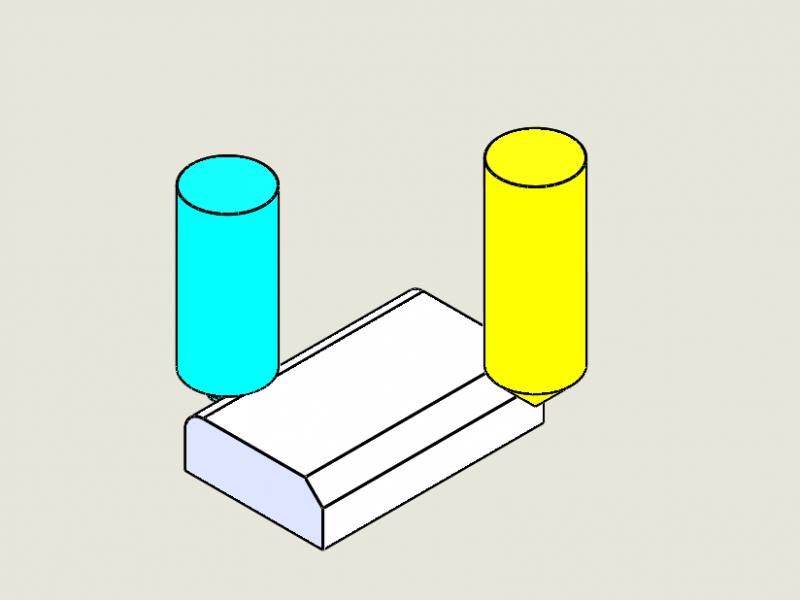
Dowel Pins
When it comes to dowel pins, one of the most common methods of alignment, the most tried and true method is to mate two dowel pins with a hole and a slot. The hole locates the first dowel pin, and the slot aligns the second dowel pin, completing the mating process. We as a manufacturer believe it’s better to make two holes to line up with one plain dowel and one diamond dowel. This is much easier to make especially with deeper holes and slots.
We use the Magafor brand of reamers almost exclusively for making tightly toleranced dowel holes. Of all the tools and brands we have tried, they are the most consistent. This brings us to our next point, hole sizes. If you are specifying a hole size for a dowel press fit, it’s easiest for us to simply make it 0.0004″ (0.01mm) under nominal, conversely a slip fit could be the same amount over nominal. The high accuracy series of Magafor reamers come in steps of 0.01mm, so we stock nominal +0.01mm, and nominal -0.01mm of all popular dowel size reamers. While you certainly don’t have to make your sizes and tolerances to suit us, it certainly helps us lower our costs and lead times when allowed the option of using what we have on hand.
Below you’ll see a few examples of a plain and diamond dowel pin setup.
Main Takeaway: Using one diamond, and one plain dowel pin is cheaper than making slots.
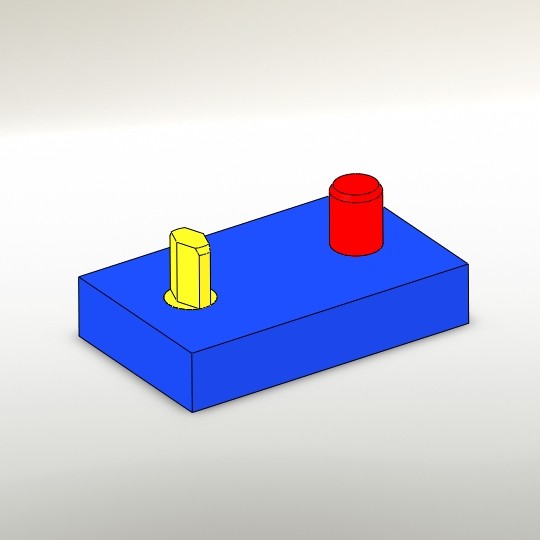
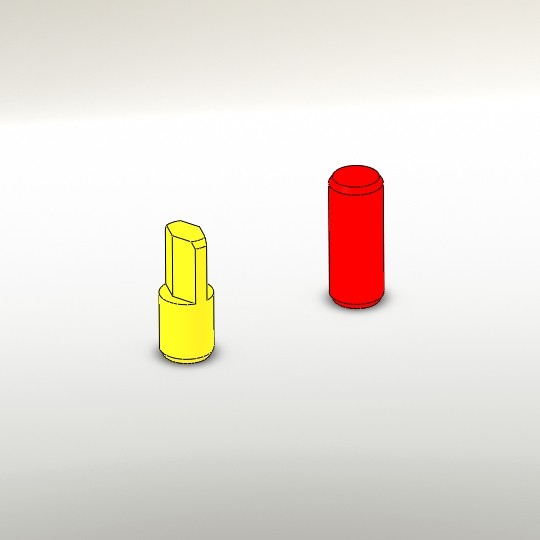
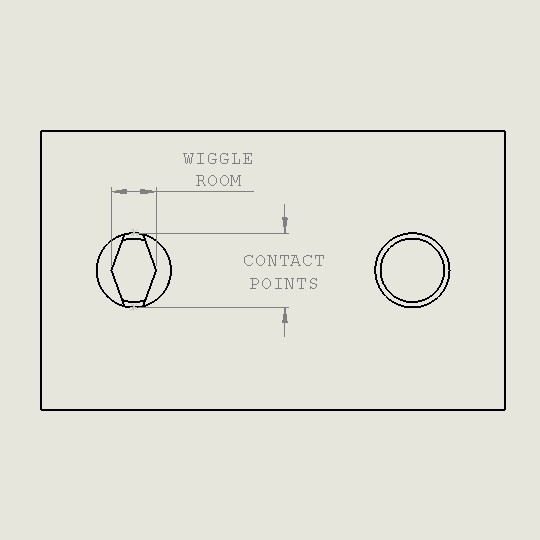
INTERNAL CORNER RADII
A 0.5″ endmill fits in a 0.25″ corner radius right? The answer is sort of. When designing any internal feature, the largest allowable corner radius is the best, within reason of course. A 1″ radius is not necessary on a 0.25″ dp pocket, but as a rule of thumb the pocket should not be any deeper than three times the cutter dia. This doesn’t mean that you can’t have deeper pockets or smaller radii, but it does start to get rather tricky when the depth to cutter diameter ratio exceeds five. Another basic rule is that the radius shouldn’t match the cutter perfectly. In the examples below you can see that the rightmost pocket allows the cutter to interpolate along the radius instead of ramming straight into the corner like the center example. The best way to avoid this is to open up the radius just a little bit. A 0.500″ end mill would fit fine in a 0.270″ radius. Even a 0.255″ radius would be better than an exact radius.
Main Takeaway: If possible the radius of an internal corner should be bigger than the cutter intended to make it, and similarly the pocket should be no deeper than five times the diameter of the cutter intended to make it.
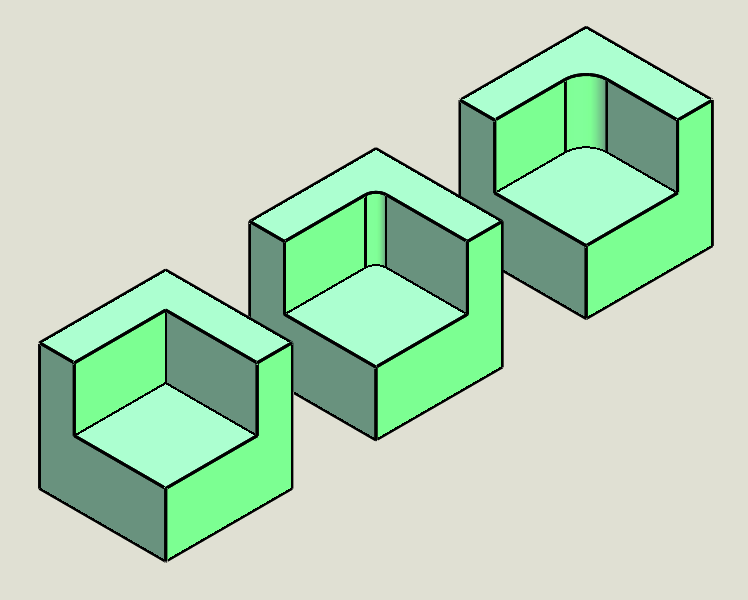
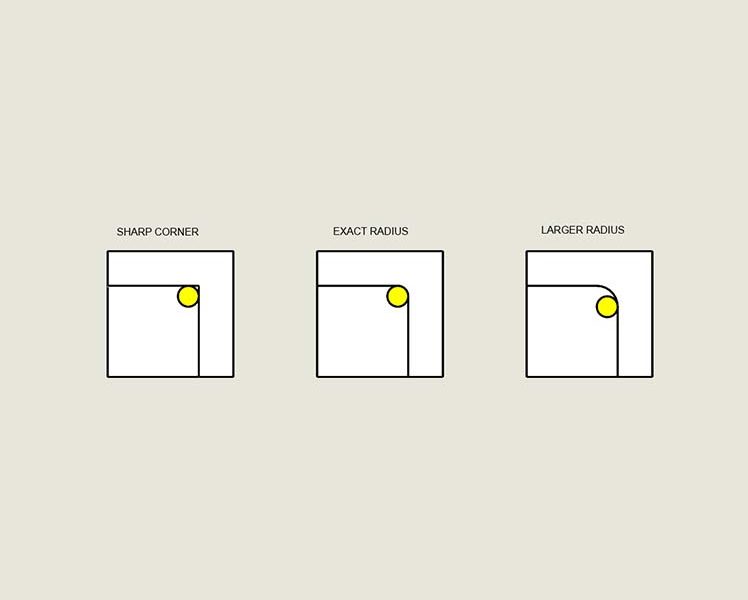
THREAD HIGBEE
In some applications a blunt start thread (AKA a thread higbee) is helpful, or even necessary. Firefighting hoses use higbees to allow for easy coupling of the hose connections. The connections are marked with a groove where they should align for an easy thread start. No one needs a cross-threaded connector when they’re fighting a fire. Pipes threaded for oil drilling often require a thread higbee. The oil drilling business is highly competitive and lost time from an expensive, cross-threaded pipe connection is unacceptable. Many of the go/no-go gauges used for checking threads have a higbee to help clear chips away from the thread and once again prevent cross threading.
Main Takeaway: Blunt start threads prevent cross threading.
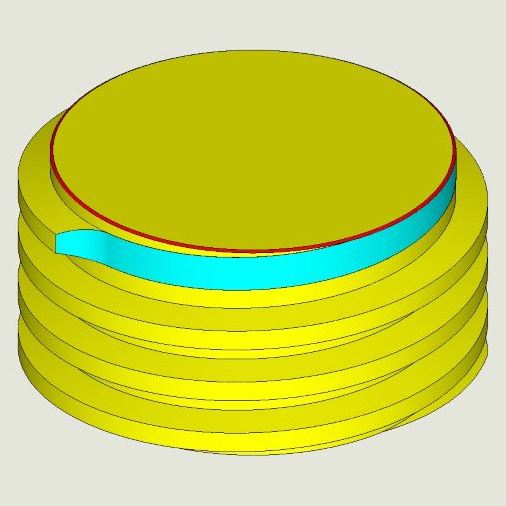
An ACME thread with a blunt start (higbee)
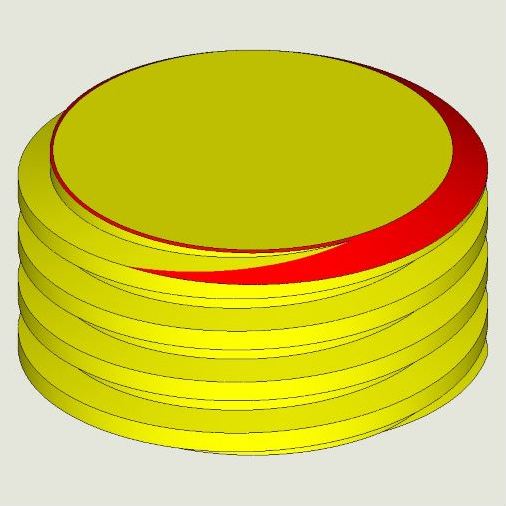
An ACME thread with a chamfered start

